Abstract
Thirty-one children who survived severe birth asphyxia defined by a 1-minute Apgar score of 0, or a 5-minute Apgar score of less than 4, have been seen at age 5 to 10 years for neurological and psychological assessment. Their progress has been compared with that of controls matched for sex, birthweight, gestational age, and social class. 29(93%) of the 31 asphyxiated group and all the controls had no serious neurological or mental handicap. 2 were severely disabled and mentally retarded. Detailed studies of psychological function showed no significant differences between the two groups. 2 apparently stillborn infants have made normal progress. It was not possible to identify any perinatal factor which predicted the occurrence of serious handicap with certainty. We considered that the quality of life enjoyed by the large majority of the survivors was such as to justify a positive approach to the resuscitation of very severely asphyxiated neonates.
Full text
PDF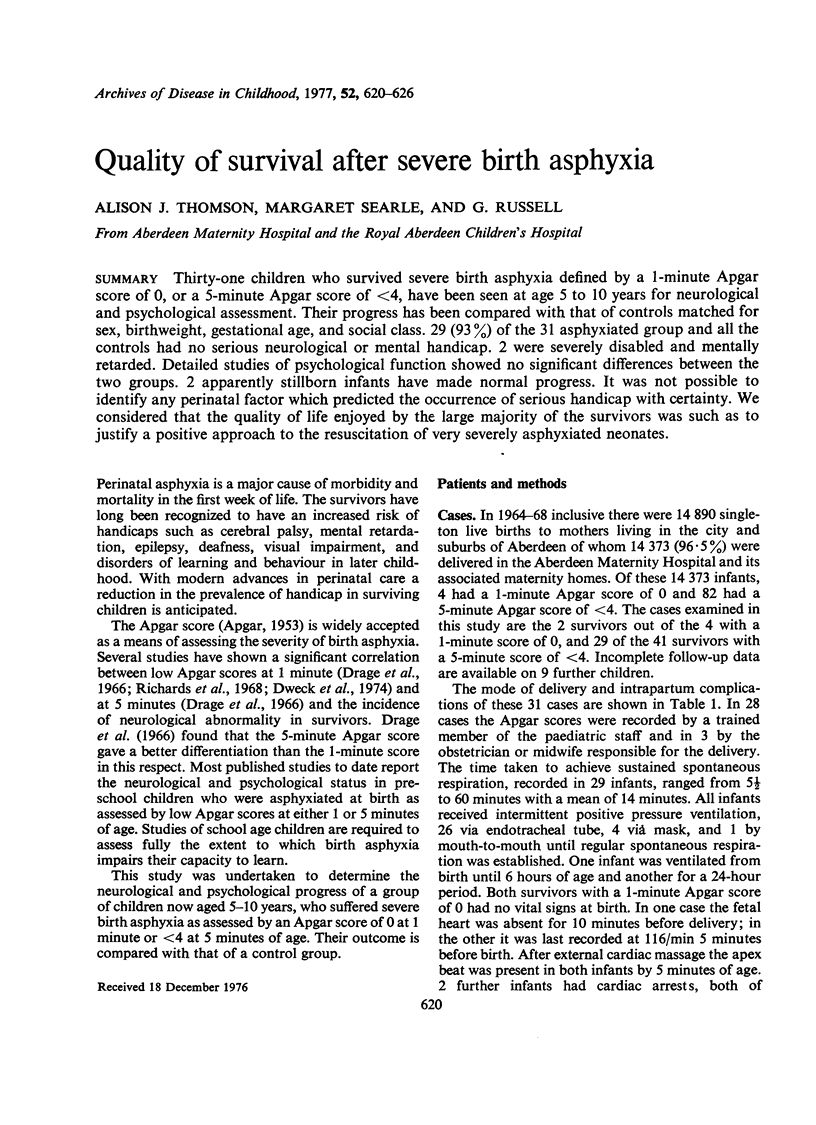
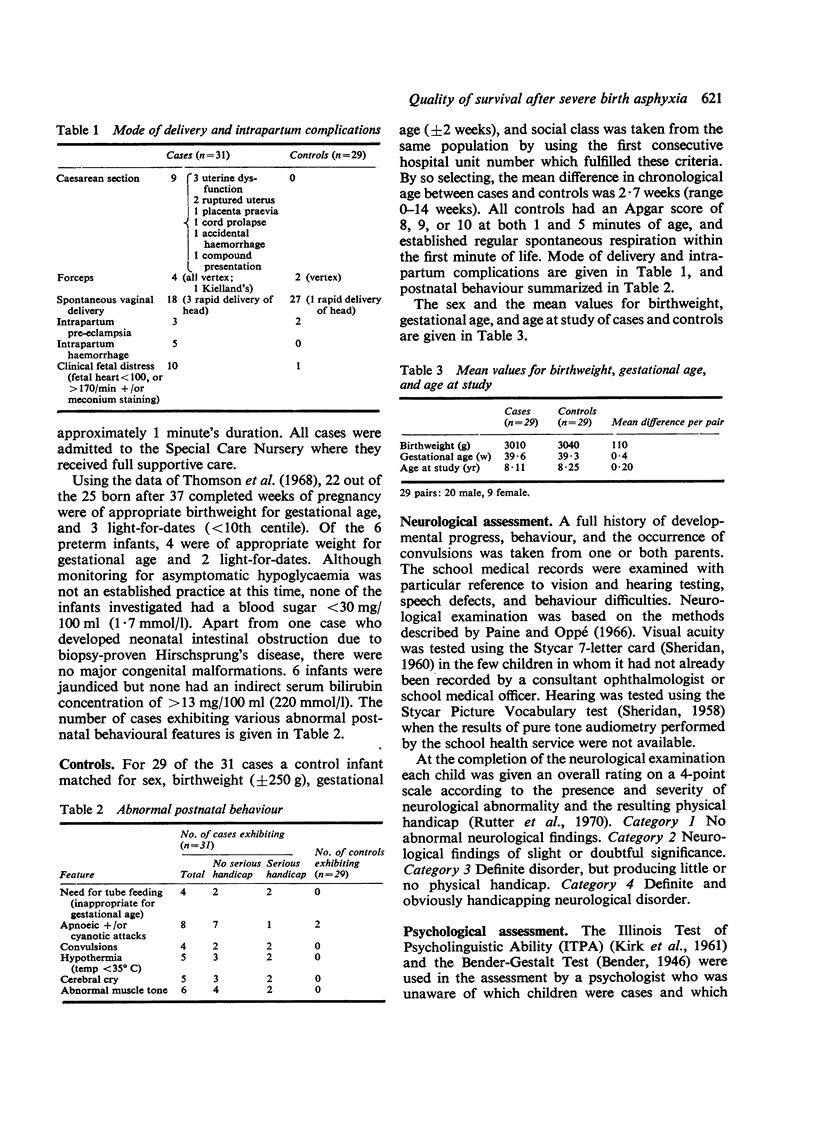
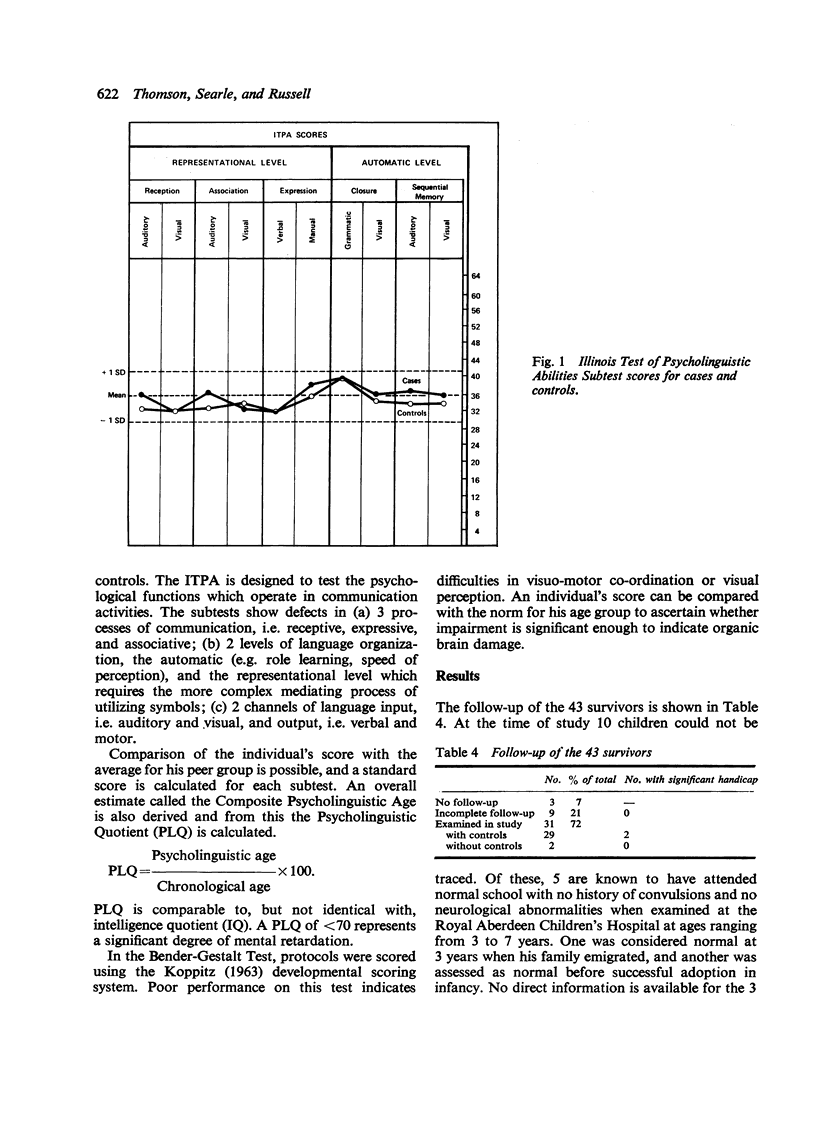

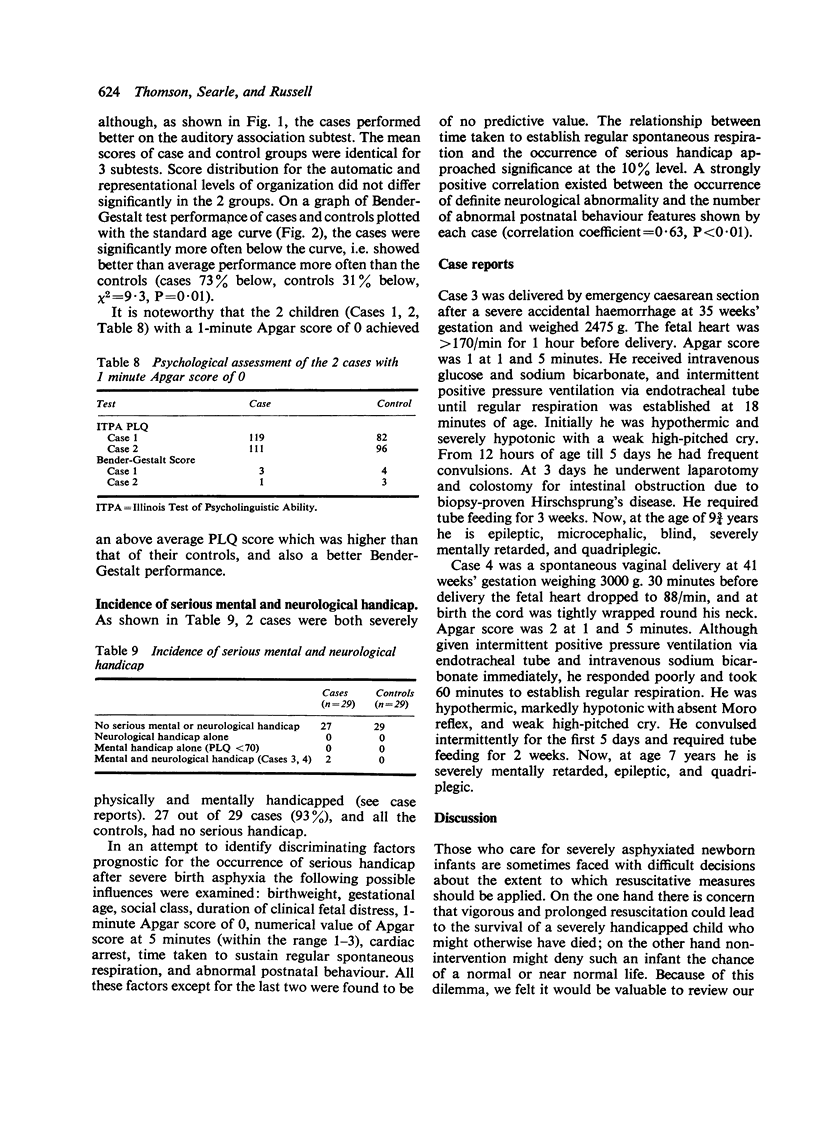
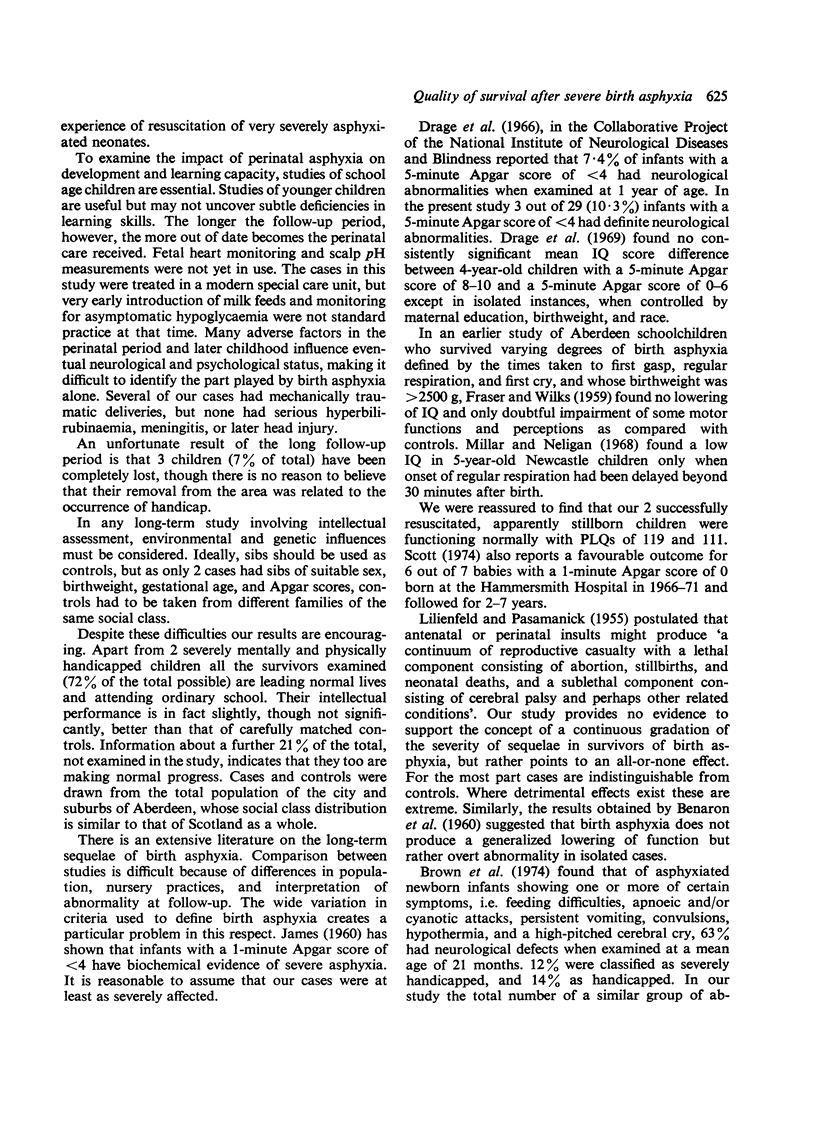
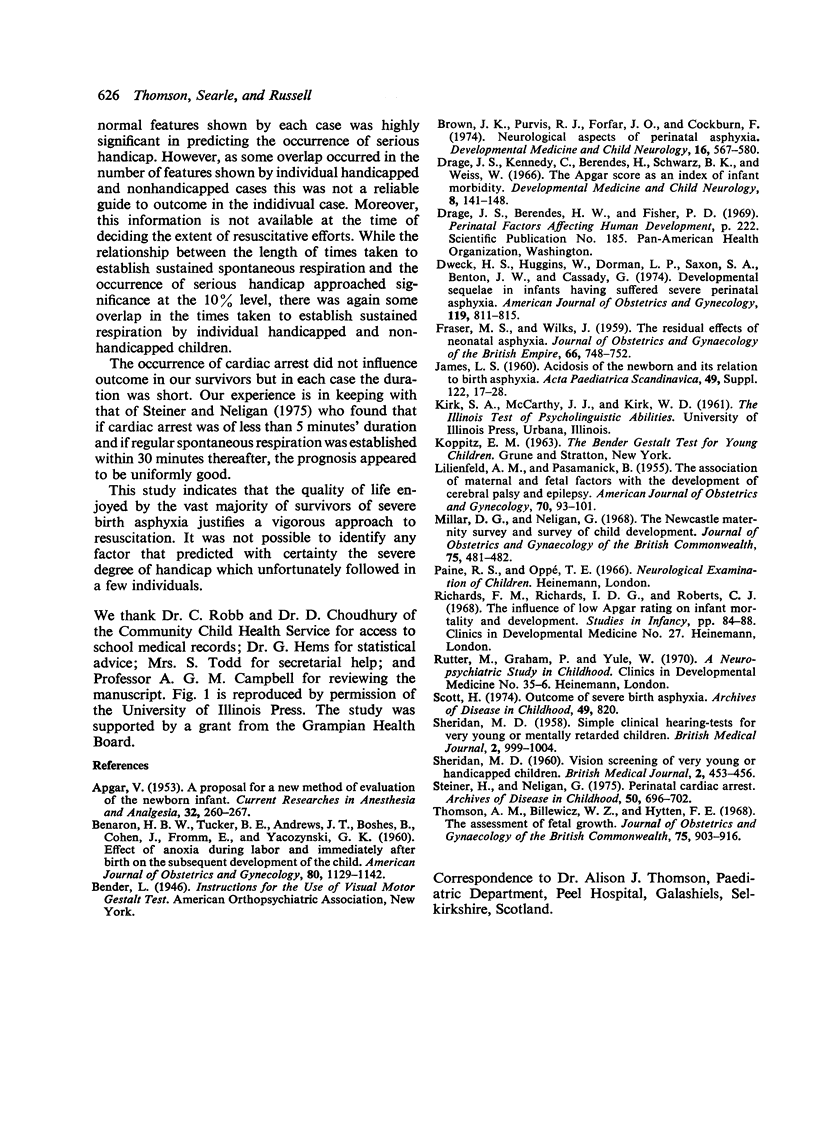
Selected References
These references are in PubMed. This may not be the complete list of references from this article.
- APGAR V. A proposal for a new method of evaluation of the newborn infant. Curr Res Anesth Analg. 1953 Jul-Aug;32(4):260–267. [PubMed] [Google Scholar]
- Brown J. K., Purvis R. J., Forfar J. O., Cockburn F. Neurological aspects of perinatal asphyxia. Dev Med Child Neurol. 1974 Oct;16(5):567–580. doi: 10.1111/j.1469-8749.1974.tb04176.x. [DOI] [PubMed] [Google Scholar]
- Drage J. S., Kennedy C., Berendes H., Schwarz B. K., Weiss W. The Apgar score as an index of infant morbidity. A report from the collaborative study of cerebral palsy. Dev Med Child Neurol. 1966 Apr;8(2):141–148. doi: 10.1111/j.1469-8749.1966.tb01719.x. [DOI] [PubMed] [Google Scholar]
- Dweck H. S., Huggins W., Dorman L. P., Saxon S. A., Benton J. W., Jr, Cassady G. Developmental sequelae in infants having suffered severe perinatal asphyxia. Am J Obstet Gynecol. 1974 Jul 15;119(6):811–815. doi: 10.1016/0002-9378(74)90094-5. [DOI] [PubMed] [Google Scholar]
- FRASER M. S., WILKS J. The residual effects of neonatal asphyxia. J Obstet Gynaecol Br Emp. 1959 Oct;66:748–752. doi: 10.1111/j.1471-0528.1959.tb01920.x. [DOI] [PubMed] [Google Scholar]
- JAMES L. S. Acidosis of the newborn and its relation to birth asphyxia. Acta Paediatr Suppl. 1960 Mar;49(Suppl 122):17–28. doi: 10.1111/j.1651-2227.1960.tb05962.x. [DOI] [PubMed] [Google Scholar]
- LILIENFELD A. M., PASAMANICK B. The association of maternal and fetal factors with the development of cerebral palsy and epilepsy. Am J Obstet Gynecol. 1955 Jul;70(1):93–101. doi: 10.1016/0002-9378(55)90292-1. [DOI] [PubMed] [Google Scholar]
- SHERIDAN M. D. Simple clinical hearing-tests for very young or mentally retarded children. Br Med J. 1958 Oct 25;2(5103):999–1004. doi: 10.1136/bmj.2.5103.999. [DOI] [PMC free article] [PubMed] [Google Scholar]
- SHERIDAN M. D. Vision screening of very young or handicapped children. Br Med J. 1960 Aug 6;2(5196):453–456. doi: 10.1136/bmj.2.5196.453. [DOI] [PMC free article] [PubMed] [Google Scholar]
- Scott H. Proceedings: Outcome of severe birth asphyxia. Arch Dis Child. 1974 Oct;49(10):820–820. doi: 10.1136/adc.49.10.820-c. [DOI] [PMC free article] [PubMed] [Google Scholar]
- Steiner H., Neligan G. Perinatal cardiac arrest. Quality of the survivors. Arch Dis Child. 1975 Sep;50(9):696–702. doi: 10.1136/adc.50.9.696. [DOI] [PMC free article] [PubMed] [Google Scholar]
- Thomson A. M., Billewicz W. Z., Hytten F. E. The assessment of fetal growth. J Obstet Gynaecol Br Commonw. 1968 Sep;75(9):903–916. doi: 10.1111/j.1471-0528.1968.tb01615.x. [DOI] [PubMed] [Google Scholar]


